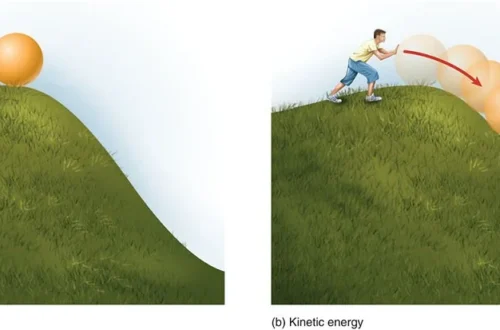Sammying is a key mechanical process in leather production, carried out after tanning. It involves applying intense pressure to wet hides or skins in order to remove excess water entrapped in the fibers.
By compressing the hide, the fibers are forced to come closer together, improving uniformity, compactness, and preparing the material for subsequent operations. The process helps in giving the leather a smooth, consistent surface and helps avoid distortions or creases that may hamper later finishing steps.
Sammying is typically performed using hydraulic or pneumatic presses, which can exert substantial tonnage (sometimes up to 80 tons of pressure) to properly squeeze the moisture out.
Why Sammying Matters: Its Purpose & Benefits
The purpose of sammying is not just dewatering — it serves multiple essential functions in leather manufacture:
-
Moisture removal: It extracts residual water from the hide’s fiber matrix, reducing drying load.
-
Fiber consolidation: The pressure causes fibers to adhere, leading to a more compact and stable structure.
-
Surface smoothing: It helps flatten out irregularities, wrinkles or undulations, leading to a smoother finish.
-
Dimensional control: By controlling thickness and preventing excessive swelling or distortion, the hide becomes easier to handle in subsequent processes.
-
Preparation for downstream processes: A well-sammyed hide better accepts setting out, finishing, staining, or drying steps.
Overall, sammying is critical to quality leather production — skipping or doing it poorly can lead to defects, unevenness, or instability in the final product.
Equipment & Types of Sammying Machines
Sammying is conducted using specialized industrial machinery. The design and configuration depend on factors like hide size, throughput, and desired output quality.
Basic Types of Sammying Machines
-
Press (batch) sammying machines
These are traditional presses where hides are placed, compressed for a set time, then released. The machine cycles in batches. -
Continuous / through-feed sammying machines
These allow hides to pass continuously through rollers applying pressure. This offers higher throughput, especially in large tanneries. -
Combination machines (Sammying + Setting Out)
Some modern machines combine sammying and setting out in one pass, flattening and moisture removal simultaneously.
Mechanism & Components
-
Cylinders / rollers: Often two or more rollers (upper and lower) that squeeze the hide.
-
Absorbent covers / felt / rubber: Surfaces may be covered in absorbent felt, rubber, or other materials to help wick moisture.
-
Pressure system: Hydraulic or pneumatic systems that deliver controlled, uniform pressure.
-
Frame / structure: Rigid, heavy frames to withstand the compressive forces without distortion.
-
Control & measurement systems: Modern machines may integrate sensors to monitor thickness, pressure, moisture content, or hide area.
Industrial Examples
-
GER Elettronica offers systems with traceability and measurement instrumentation during sammying.
-
CM Tannery Machines produces continuous sammying models (R160T, R200T, etc.) tailored for large hide sizes.
-
EMC Italy produces machines that combine sammying and setting-out functionality using rubber, felt, and blade rollers.
Process Workflow & Operating Considerations
For sammying to succeed, operators must consider timing, hide condition, and parameters carefully.
Workflow Steps
-
Hide preparation: After tanning and washing, the wet hide (still holding water) is positioned for sammying.
-
Loading / alignment: Hide is placed and aligned to ensure even pressing.
-
Compressing / pressing: The machine applies pressure for a set dwell time.
-
Unloading / relief: After compression, the pressure is released and hide is removed.
-
Inspection: Check for surface defects, uniformity, thickness deviations.
-
Further processing: The hide moves to setting, drying, finishing, etc.
Key Operating Considerations
-
Pressure level & duration: Needs to be optimized so that enough moisture is expelled without crushing or damaging fibers.
-
Hide thickness variation: Because hides vary, pressure must accommodate thicker and thinner zones.
-
Absorbent covers condition: Felts or coverings must be maintained, cleaned, or replaced to avoid contamination or inefficient moisture absorption.
-
Machine calibration & maintenance: Regular calibration ensures uniform pressure. Frame and hydraulic systems must be maintained.
-
Batch size / throughput balance: Continuous machines must balance speed with quality — too fast may sacrifice compression uniformity.
Challenges, Limitations & Best Practices
Even though sammying is essential, it carries challenges and potential pitfalls. Understanding those enables better quality control.
Challenges & Limitations
-
Overcompression risk: Excessive pressure or long dwell time can crush fiber structure, weakening the hide.
-
Uneven moisture removal: Inconsistent pressure or misaligned hide can lead to some areas under-processed and others over-compressed.
-
Wear & tear on absorbent covers: Felts and rubber surfaces deteriorate over time, leading to contamination or poor absorption.
-
Energy / cost considerations: Large presses consume power, require maintenance, and must be cost-justified in production flow.
-
Size constraints: Very large or irregular hides may not be processed optimally in standard machines.
Best Practices
-
Regular inspection of felts/rollers to prevent contamination and ensure absorption.
-
Gradual ramp-up of pressure during trials to find optimal settings for each hide type.
-
Uniform feeding & alignment to prevent misfeeds or wrinkles entering the press.
-
Scheduled maintenance & calibration of hydraulic systems to maintain consistent performance.
-
Integration of sensors / monitoring to measure moisture, thickness, and control consistency.
Future Trends & Technological Advances in Sammying
The leather industry continues innovating to make sammying more efficient, sustainable, and precise.
-
Automation & sensor integration
Advanced sammying machines now incorporate sensors for thickness, pressure, moisture, and hide area to adapt pressure in real time and reduce defects. -
Continuous / through-feed designs
More tanneries are moving toward continuous sammying systems that improve throughput and reduce labor. -
Combined machines
Hybrid machines that combine sammying + setting out reduce handling steps and streamline operations. -
Energy efficiency & sustainability
Efforts include optimizing hydraulic systems, recovering energy, and using more efficient machine designs to reduce power consumption. -
Material innovations
Developing better absorbent felts / roller coverings that have longer life, better moisture wicking, and resist contamination.
Conclusion
Sammying is an indispensable process in the leather manufacturing chain. By applying high pressure to wet hides, sammying helps remove excess water, consolidate fibers, and produce smooth, defect-free surfaces that are ready for further processing.
Modern sammying machines, whether batch presses or continuous through-feed systems, rely on careful calibration, absorbent surfaces, and control systems to achieve consistent results. Though challenges exist — from overcompression to roller wear — following best practices can mitigate them.
As technology advances, sammying continues evolving with automation, combined processes, sensor integration, and energy efficiency improvements. For tanneries committed to high-quality leather production, mastering sammying is central to their success.





